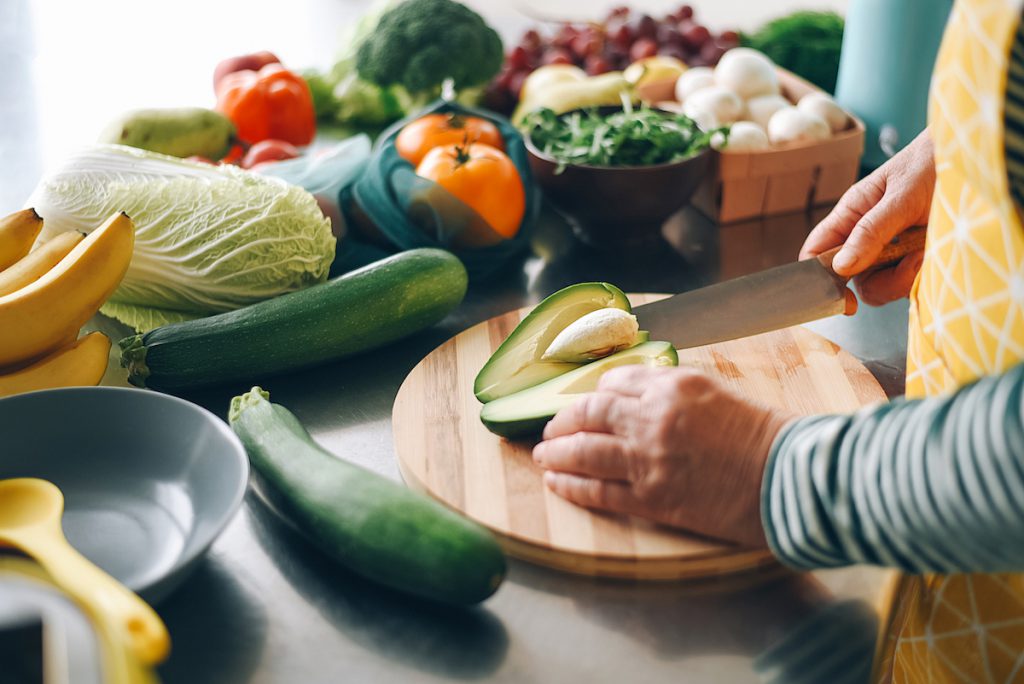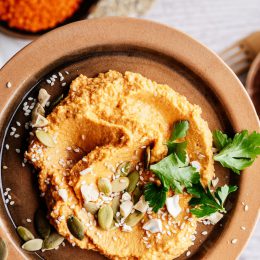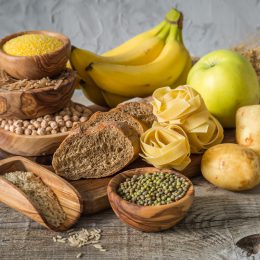10 Delicious Ways to Sneak in More Veggies
Most of us could do a much better job of working vegetables into our daily diet. Enjoy these easy and delicious recipes to use more produce in your meals.

Vegetables deserve to be the rock stars of your diet. They’re among the most varied, versatile, flavorful, and healthiest things you can put in your mouth. But despite all of that, only one in 10 American adults eat the recommended two to three cups of veggies each day. That is a missed opportunity to improve your health.
When you skimp on veggies, you miss an easy way to prevent several serious health conditions. A 2023 study in the journal Diabetes Care found that people with the greatest daily intake of vegetables had a 21% lower risk for developing type 2 diabetes than those who consumed the least. Another study found that women over 60 who took in greater amounts of veggies were less likely to have age-related physical decline.
Vegetables contain an assortment of vitamins, minerals and plant compounds that can help keep us healthier as we age. Luckily, there are endless ways to reaching your daily quota — without relying only on salads. Try these recipes to sneak them into everything from oatmeal to burgers to chocolate pudding.
Healthy eating and fitness go together! SilverSneakers classes and events are happening right now at participating gyms, online through SilverSneakers LIVE, and at community centers near you. Activate your free online account to get started.
When You Make: Smoothies
Add: Baby Spinach
Baby spinach has a neutral flavor, so you can blend it into smoothies without altering the taste. When you do, you’ll benefit from a big dose of vitamins A, C, and K. Vitamin A helps maintain healthy bones, vitamin C boosts our immune system, and vitamin K helps our blood clot, allowing wounds to heal.
Try This Recipe: Add 1 cup milk, 1/2 cup plain Greek yogurt, 1 cup baby spinach, 2 teaspoons almond or peanut butter, 1/4 teaspoon cinnamon, and 3/4 cup frozen blueberries to a blender container. Blend until smooth.
Recommended reading: How to Start Eating Plant-Based
When You Make: Mashed Potatoes
Add: Cauliflower
Who wouldn’t be on board for making this classic comfort food healthier? Swapping out some of the potato for mashed cauliflower increases the nutritional value. A study in the International Journal of Epidemiology found that cruciferous vegetables like cauliflower and broccoli lower the risk for premature death from cardiovascular disease and cancer.
Try This Recipe: Place 1/2 pound chopped Yukon gold potatoes in a steamer basket set over 2-inches water. Steam until tender. Remove potatoes from the basket and add 4 cups cauliflower florets to steamer basket and steam until tender. In a food processor, blend potatoes, cauliflower, 2 tablespoons butter, 1 tablespoon fresh thyme or chopped rosemary, 1/2 teaspoon salt, and 1/4 teaspoon black pepper.
When You Make: Burgers or Meatloaf
Add: Mushrooms
Substituting 50% to 80% of the ground beef in a dish with cooked crimini or white mushrooms resulted in a meal with fewer calories, cholesterol, saturated fat, and sodium. It also boosted intake of vitamin D, potassium and B vitamins, according to a study in the Journal of Food Science. Think you won’t like it? Think again. Study participants preferred the flavor of the mushroom-enhanced meals.
Try This Recipe: Sauté 1 cup chopped onion and 1/2 pound chopped cremini (brown) mushrooms until tender. In a large bowl, mix together 1/2-pound ground beef, sautéed onions and mushrooms, 1/4 cup barbecue sauce, 1 teaspoon cumin powder and 1/2 teaspoon salt. Form into 4 burger patties and grill or pan-fry for 5 minutes per side. Top patties with your favorite burger toppings.
Recommended FREE SilverSneakers On-Demand Class: Eating a Varied Diet for Seniors
When You Make: Oatmeal
Add: Carrots
This may not be a combo that immediately comes to mind, but shredded carrots add a touch of sweetness to this breakfast classic. They also add high amounts of beta-carotene, which is a plant-based compound that’s linked to healthier brain aging.
Try This Recipe: Simmer 1 cup steel-cut oats in 2 cups water until tender, about 20 minutes. Stir in 1 cup grated carrot, 1/4 cup ground flaxseed, and 1 teaspoon ground allspice; heat 2 minutes. Serve topped with berries, chopped nuts, and a drizzle of maple syrup if you wish.
When You Make: Grilled Cheese
Add: Butternut Squash
Who says that tomato soup is the only way to add some veggies to this classic sandwich? Butternut squash adds buttery sweetness along with loads of brain-assisting beta-carotene. Go a step further and add some sun-dried tomatoes for a splash of vitamin C too.
Try This Recipe: Mash 2 cups cubed cooked butternut squash with 1 cup shredded cheddar cheese, 1/3 cup sliced sun-dried tomato and 1 tablespoon fresh thyme. Use this as your grilled cheese spread. Add extra nutrition by topping the cheese spread with baby spinach.
When You Make: Salad Dressing
Add: Red Peppers
Many prepared salad dressings contain a lot of calories and added sugar, which somewhat defeats the purpose of eating a healthy salad. It’s easier to make your own dressing than you’d think. Red peppers are a stand-out source of vitamin C, and the jarred roasted variety blends well and adds extra flavor.
Try This Recipe: Using a blender or food processor, blend together 2 jarred whole roasted red peppers, 1/4 cup extra-virgin olive oil, 2 tablespoons red wine vinegar, 1 tablespoon fresh thyme, 2 teaspoons lemon zest, and 1 garlic clove until smooth. Store in the refrigerator in a sealed container for up to two weeks.
Recommended reading: 12 Easy Ways to Make Salad Taste Amazing — Seriously
When You Make: Sandwich Wraps
Add: Collard Greens
Sturdy collards make a surprisingly good stand-in for tortillas when making sandwich wraps, and they make your hand-held meal taste extra fresh. Plus, collards have high amounts of vitamin K to help keep your bones strong.
Try This Recipe: Cut off the firm white stalks of two collard leaves. With a sharp knife, fillet off the thickest parts of the remaining stalks that run down the backside of the leaves. Place two collards head to foot (stalks at opposite ends) and partially overlap the leaves. Add your desired toppings down the center lengthwise. Tightly roll the leaves beginning from the bottom wider end, tucking in the sides as you go. Cut in half on a bias to serve.
Recommended reading: 11 Leafy Greens You Should Be Eating, According to Dietitians
Subscribe to our newsletter
It's quick and easy. You could be one of the 13 million people who are eligible.
Already a member? Click to discover our 15,000+ participating locations.
Follow Us
When You Make: Yogurt
Add: Beets
Beets are among the sweetest-tasting vegetables, so adding them to a bowl of yogurt is not as far-fetched as you may think. Research suggests that the naturally occurring nitrates in beets could help keep blood pressure numbers down.
Try This Recipe: Stir together 3/4 cup plain Greek yogurt, 1 teaspoon orange zest and 1/2 teaspoon vanilla in a bowl. Top with 1/2 cup cubed cooked beet, 2 tablespoons chopped nuts and a drizzle of honey. Add granola to make it a breakfast bowl.
When You Make: Pancakes
Add: Sweet Potato
As its name suggests, sweet potato brings sweetness to this beloved weekend breakfast dish. Like carrots and pumpkin, this veggie owes its brilliant orange hue to beta-carotene. When your body converts this compound into vitamin A, it works to protect your eyes, skin, and bones.
Try This Recipe: In a blender, combine 3/4 cup milk, 1 cup cubed cooked sweet potato, 1 egg, 1 cup whole wheat pastry flour or oat flour, 1 teaspoon vanilla, 1 teaspoon cinnamon, and 1 teaspoon baking powder. Stir in 1/3 cup chopped walnuts. Using a 1/4 cup measuring cup, drop batter onto a hot greased skillet and cook for 2 minutes, or until edges begin to curl in. Flip and cook an additional 1 minute.
When You Make: Chocolate Pudding
Add: Avocado
While it’s technically a fruit, avocado is delicious in savory recipes. It works well in sweet ones too. This green goddess gives pudding a fudgy texture and a big nutritional upgrade. Having at least two servings of avocado per week lowers heart attack risk by 21%, says the Journal of the American Heart Association. Avocados are rich in dietary fiber and a range of vital vitamins and minerals for good health.
Try this recipe: Blend together 2/3 cup milk, 1/4 cup maple syrup, 1/4 cup cocoa powder, 1 teaspoon vanilla, 1 teaspoon cinnamon, a pinch of salt, and the flesh of 2 small avocados. Chill pudding for at least 2 hours before serving.
Recipes from Matthew Kadey, R.D.
See our sources:
U.S. vegetable consumption: Centers for Disease Control and Prevention
Vegetables and diabetes prevention: Diabetes Care
Fruit and vegetable intake and frailty risk: American Journal of Clinical Nutrition
Health benefits of vitamins: National Library of Medicine
Vegetable consumption and premature death risk: International Journal of Epidemiology
Mushrooms in meat-based dishes: Journal of Food Science
Benefits of beetroot juice: Critical Reviews in Food Science and Nutrition
Avocados and heart health: Journal of the American Heart Association
Check Your SilverSneakers Eligibility Instantly
SilverSneakers members can go to thousands of nationwide gyms and fitness locations, plus take SilverSneakers LIVE online classes that are designed for all fitness levels and abilities. If you have a Medicare Advantage plan, it may include SilverSneakers — at no additional cost. Check your eligibility instantly here.
Already a member? Get your SilverSneakers member ID and exclusive fitness and wellness content by activating your online account here.
Not eligible for SilverSneakers? You can still get 200+ free SilverSneakers On-Demand videos and stay in touch with us by creating your online account.




